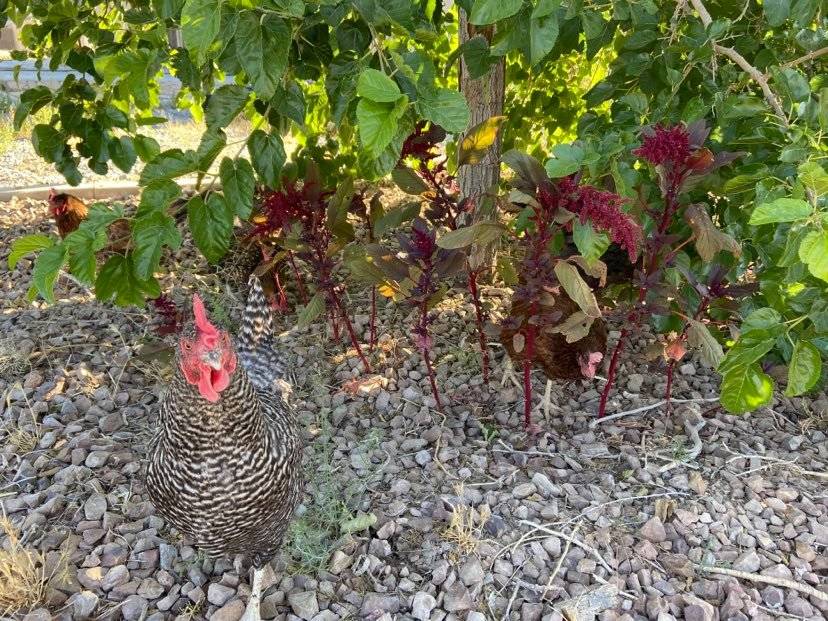In Season: Amaranth is the perfect grain for our desert region
There has been a trend in recent years toward eating less gluten and more ancient grains. I cannot speak to the health benefits of eating this type of diet, but I can tell you that there is an ancient grain that grows very well in our desert climate and poor soils.
Amaranth is not a grain at all, but it is consumed in a similar manner. It was a staple of the Aztecs in South America, who may have been the first to cultivate the crop.
Amaranth is available in a variety of colors from green to red and many variants in between. Its colorful stalks can grow up to 6 feet high with beautiful draping flowerheads that contain the seeds. Though the seeds are generally what is harvested and made into a variety of products, the leaves are also edible.
Establishing, caring for amaranth
Amaranth will spread easily, and for this reason, many gardeners that I know ban it from their gardens. For me, it is hard to pass up an edible plant that grows so well in our climate with very little tending. Once amaranth is established in your garden, you will not likely need to purchase seed again. Volunteers will emerge year after year and could take over if not controlled.
If you have an area of your yard that typically becomes a wild and weedy patch, that is the perfect spot to plant amaranth. I grow amaranth in the parts of the yard that my chickens have access to. They tend to leave the emerging seedlings alone but eat the seeds from the flower stalks as they ripen.
Amaranth can be planted anytime, from early March to early May, once the danger of a freeze has passed. To plant amaranth, simply clear the area of weeds and rake the soil to lightly break it up. Give the area a good overhead watering. Once the area is nice and damp, broadcast the tiny seeds over the wet soil.
At this point, you should cover the amaranth with some type of light mulch to keep the birds from eating the seed. The mulch should not be layered on very thick, just one-fourth of an inch deep. I like to use straw, leaves or dried weeds that have not gone to seed.
Water the amaranth patch with a quick shower daily until the seedlings emerge, and then water weekly. Amaranth does not need much water to grow. Some of my amaranth patches are only watered weekly, if that. Watering more frequently will lead to taller plants, however.
When and how to harvest amaranth:
Leaves can be harvested throughout the growing season and eaten fresh in salad or cooked like spinach. The young smaller leaves have a better flavor than the large older leaves, which can be somewhat bitter. Amaranth plants need their leaves to produce the flowerheads and seeds so try not to harvest more than a few leaves from each stalk at one time.
Once the stalks start to droop and begin to dry up, your amaranth is ready to harvest. I harvest the seeds by cutting the stalks just below the flowerhead and bundling them together. I then hang them upside down in a shed with a tarp on the floor. As the flowerheads continue drying, the seeds fall onto the tarp. The tarp is then gathered up and the seed is poured into a food safe bucket for storage. Seed can be stored for at least a year if not longer.
The grain can be cooked the same way you would rice or quinoa. It can also be popped to make a delicious treat that is similar in texture to puffed wheat. Amaranth can be fed to livestock as well.
The dried-up stalks complete with seed heads can be laid on the ground as a supplement to regular feed while also providing a source of entertainment.
If you are looking for an easy, drought-tolerant, versatile crop to grow, look no farther than amaranth.
Terri Meehan is the Founder of Southern Nevada Gardening Association a regional group. She is a garden mentor and local farmer in Pahrump. Send questions or comments to her at sonvgarden@gmail.com














